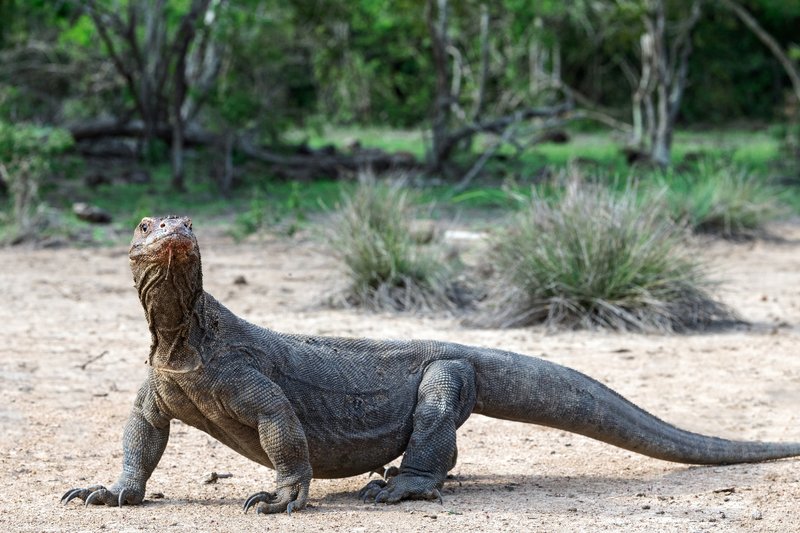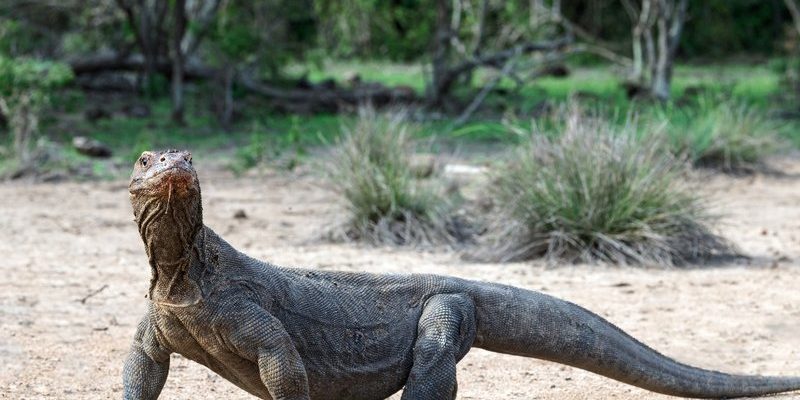
Imagine sitting in a cozy café, chatting over coffee, and diving into the world of this reptiles’ natural habitat. The Komodo dragon isn’t just lounging around. It’s a crucial predator, influencing the populations of various species and maintaining the health of its ecosystem. Let’s explore how the Komodo dragon contributes to its natural world and why it’s so important.
Understanding the Habitat of the Komodo Dragon
The Komodo dragon thrives in a unique environment dominated by dry savannas, tropical forests, and rugged volcanic landscapes. These islands, including Komodo, Rinca, and Flores, provide the perfect conditions for these reptiles to grow and flourish. They prefer areas with plenty of sunlight, as these lizards are ectothermic—meaning they rely on external heat to regulate their body temperature.
This habitat isn’t just a backdrop for their lives; it shapes how they behave and survive. The rocky cliffs and dense underbrush serve as both hunting grounds and places to hide from potential threats. Imagine a vast, sun-baked landscape where the Komodo dragon can stealthily stalk its prey, often hiding in plain sight among the rocks and foliage.
The unique ecosystems of these islands also contribute to the dragons’ health and well-being. Here’s a closer look at the environment that supports the Komodo dragon’s lifestyle:
- Food Availability: The abundance of wild deer, pigs, and smaller animals provides a rich food source.
- Climate: The tropical climate offers warmth, which is crucial for the Komodo dragon’s survival.
- Water Sources: Natural springs and rivers aid in keeping the habitat diverse and suitable.
The Predatory Role of the Komodo Dragon
As apex predators, Komodo dragons are not just the kings of their domain; they play an essential role in controlling the populations of other animals. By preying on deer and wild pigs, they help maintain a balance within the ecosystem. Without these hunters, the populations of their prey could explode, leading to overgrazing and damage to vegetation.
Here’s the thing: the hunting techniques of the Komodo dragon are impressive. They rely on patience and stealth, often waiting for the perfect moment to strike. Once they capture their prey, they use their powerful jaws and serrated teeth to inflict deep wounds. The saliva of the Komodo dragon contains various bacteria that can infect the prey, causing it to weaken over time. It’s a fascinating, albeit brutal, method that showcases nature’s raw survival instincts.
This role doesn’t just help the Komodo dragon but benefits the entire ecosystem. By keeping prey populations in check, they help maintain the biodiversity that is vital for the health of their habitat.
Impact on Other Species
The presence of Komodo dragons doesn’t just influence the prey species; it also affects other animals in the ecosystem. By controlling herbivore populations, they ensure that plant life can thrive. When deer populations are balanced, it allows for a diverse range of flora, which in turn supports a variety of other species.
Interestingly, the Komodo dragon’s hunting habits also create opportunities for scavengers. After a successful hunt, other animals like hyenas and vultures will often take advantage of the leftovers. This scavenging cycle is a wonderful example of nature’s interconnectedness, where one species’ activity supports others.
Plus, the Komodo dragon helps create habitats. Their movements through the landscape, whether it’s creating trails or digging burrows, can alter the environment in ways that benefit other organisms.
Conservation Challenges for the Komodo Dragon
Despite their impressive stature, Komodo dragons face numerous threats that jeopardize their existence. Habitat destruction due to human activities, such as deforestation and tourism, poses a significant challenge. As people encroach on their territory, the delicate balance of their ecosystem becomes disturbed.
Climate change is another looming issue. Rising sea levels and changing weather patterns can affect their habitats and food sources. For example, droughts can impact deer populations, which in turn affects the Komodo dragons that rely on them for sustenance.
Conservation efforts are crucial to ensure the survival of these magnificent creatures. Protecting their habitat, enforcing wildlife laws, and promoting sustainable tourism can all contribute to preserving the Komodo dragon’s role in the ecosystem.
The Cultural Significance of the Komodo Dragon
Beyond their ecological importance, Komodo dragons hold cultural significance for the communities living near their habitats. For centuries, these dragons have been a source of fascination and pride for locals. They are often featured in folklore and stories passed down through generations, symbolizing strength and resilience.
This cultural connection can also play a role in conservation. By promoting awareness and encouraging respect for the Komodo dragon, local communities may be more inclined to protect their habitat. Education about the ecological importance of the dragons can foster a sense of stewardship among the people living nearby.
Moreover, sustainable tourism that highlights the Komodo dragon can provide economic benefits to these communities while raising awareness about the need for conservation.
The Komodo dragon is more than just a fearsome predator; it’s a vital player in its natural habitat. From maintaining the health of its ecosystem to influencing cultural narratives, these remarkable creatures deserve our attention and protection.
As we face challenges like habitat loss and climate change, it’s essential to support conservation efforts that safeguard their future. By understanding the role of the Komodo dragon, we can appreciate not just this unique species but the intricate web of life it represents. So next time you think about these incredible lizards, remember they’re not just surviving—they’re thriving, and playing a big part in the natural world around them.

